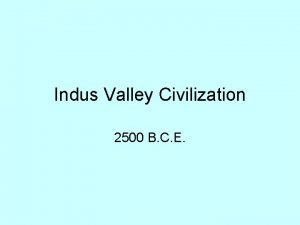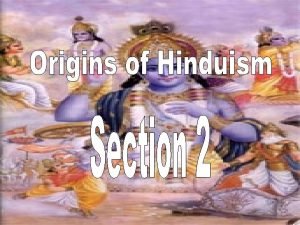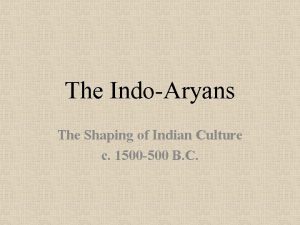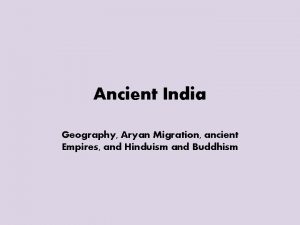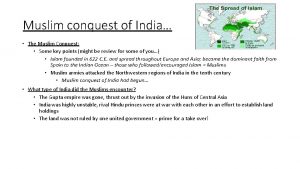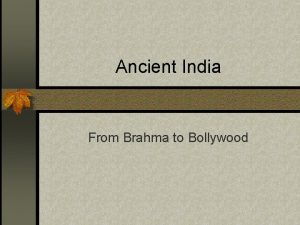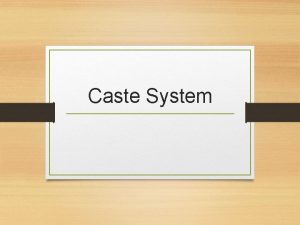Society in Ancient India The Aryan conquest had






- Slides: 6


Society in Ancient India • The Aryan conquest had a lasting effect on India. • The meeting of conquered and conqueror created a set of social institutions and class divisions that last to this day. • The caste system was one of the most important Indian social creations. • It set up a rigid hierarchy of classes that determines a person’s occupation, economic potential, and social status. • In part it was based on skin color. (pages 75– 76) Click the mouse button or press the Space Bar to display the information.

Society in Ancient India (cont. ) • There were five major classes, or castes. • The top two castes were the Aryan ruling elites, the priests and warriors. • The highest were members of the priestly class, or Brahmans. • The warriors were called Kshatriyas. • The third caste was made up of commoners, who for the most part were merchants. • Members of this caste were called the Vaisyas. (pages 75– 76) Click the mouse button or press the Space Bar to display the information.

Society in Ancient India (cont. ) • Below this were the Sudras, who made up most of the Indian population. • They were the darker-skinned natives the Aryans had conquered. • Most were peasants who did manual labor, and their rights were limited. (pages 75– 76) Click the mouse button or press the Space Bar to display the information.

Society in Ancient India (cont. ) • The Untouchables made up the lowest rung of Indian society. • They performed jobs considered degrading by Indian society, like collecting trash and handling the dead. • They made up about 5 percent of ancient India’s population. (pages 75– 76) Click the mouse button or press the Space Bar to display the information.

Society in Ancient India (cont. ) • The life of an Untouchable was difficult. • They were not considered human, and their presence was considered harmful. • They lived in separate areas. • When they traveled, they had to tap sticks together so others would know they were coming and could avoid them. (pages 75– 76) Click the mouse button or press the Space Bar to display the information.
